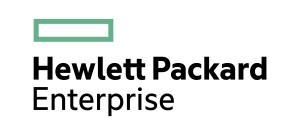This blog post is an excerpt from GovLoop’s recent guide, “Make DevOps a Reality at Your Agency.”
As government transitions away from linear application development processes and into the new era of collaborative processes, application development is becoming quicker, cheaper and more efficient. Instead of operating in their traditional silos, developers and operations staff have begun to work together on projects from start to finish.
However, similar to most innovative processes, this DevOps adoption does not come without challenges. In an interview with GovLoop, Ashish Kuthiala, Senior Director of Enterprise DevOps and Agile at HP Enterprise (HPE) Software, discussed these challenges and offered a few ways agencies can overcome them.
Unsurprisingly, one of the biggest challenges agencies face when adopting DevOps is culture. Kuthiala explained that traditionally, organizations are used to the typical manufacturing process in which the app goes from team to team down the line of development.
“With the team-to-team process there is usually a one-way flow, unlike DevOps, which has a lot of feedback loops so everyone on the project knows what is working, what is not working and what is acceptable to the customer,” he said. “You have to change that mindset when you adopt DevOps.”
To overcome the challenge of a resistant team, Kuthiala recommended adopting an organization wide continuous improvement approach. He compared the approach to running a marathon – if you train every day for six months, you will get better at it. If you want to continue getting better, however, you can’t sit back and say, “I’m done,” after the marathon. The same logic applies to DevOps – improvement doesn’t happen if you don’t have an end-to-end strategy that continues after launching an application.
To successfully implement DevOps, it is important to strategically plan what the development process looks like. Once an organization is ready to adopt DevOps, HP Enterprise Software services can help agencies get started by providing professional services and workshops plus open source tools to seamlessly stitch together this development process.
Kuthiala explained that HPE Software’s DevOps end-to-end framework allows organizations to pick and choose where they want to start their DevOps journey and what pieces of DevOps they will leverage to fit their needs.
The first phase of the end-to-end strategy is DevOps continuous assessment. This is where applications and operations initially break down silos, and it lays out how employees will get on the same page about what is being developed. The biggest things to consider here are what is being developed and if there is infrastructure to support it.
Once an agency has a tentative road map for their DevOps journey, they can implement continuous integration and testing, which focuses on automating processes around the code that is being built and all systems that work with that code. Integration is key to successful DevOps and HPE helps facilitate that by creating those integrations to assist with automating and delivering a continuous integration and testing environment through HPE Software’s software services.
The continuous release and deployment phase is where agencies can start building a better feedback loop, allowing agencies
to put better and more quality code into production faster than before. Continuous operations is the final phase of the continuous pipeline and works to address the integration between operations and applications to ultimately close any remaining gaps after the application is in production.
The continuous framework allows employees to collaborate throughout the development process and deliver new software features to users quickly and efficiently. The pipeline automates the software production line, making the continuous loop that is key to successful DevOps.
For example, the moment a developer writes a change in code, continuous deployment automates the integration, testing, deployments in different environments and security checks. “Automation and continuous monitoring allow all of these things to happen the moment code is changed so the application is always production ready,” Kuthiala explained. Through automation, the continuous pipeline approach makes deploying DevOps significantly easier, which can help alleviate cultural resistance to the change in organizations.
Ultimately, adopting DevOps as an alternate project management approach allows agencies to develop, deploy and maintain applications more seamlessly, making internal operations more efficient and effective and allowing agencies to offer the citizens who use these apps a significantly better user experience. “These changes cannot and will not happen overnight,” Kuthiala said. “But with a tolerant culture willing to take risks, agencies across the government can see improvement in their application development processes.”

Additional resources:





Leave a Reply
You must be logged in to post a comment.